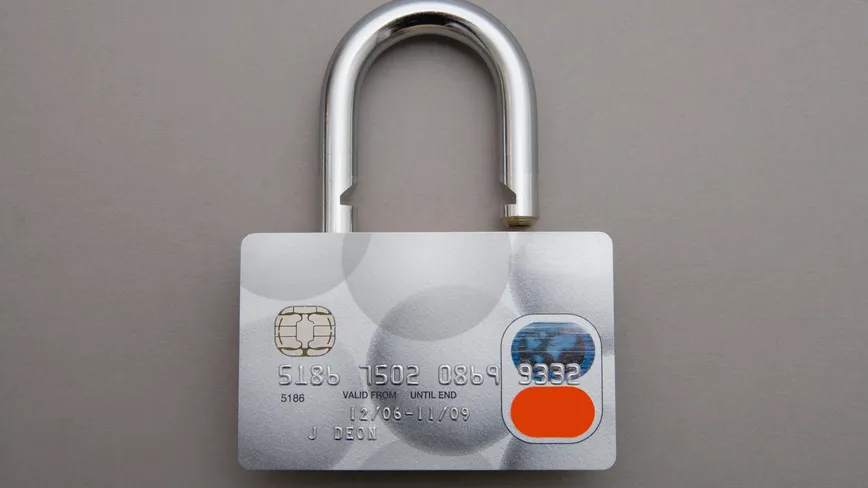Our financial information faces many threats, from data breaches to fraudulent scams (the latest through Zelle). Even though cybercriminals continue to become more sophisticated, there are methods we can use to mitigate those threats and protect our financial data, including our credit card numbers.
Shopping online with a credit card is actually a better move than using your debit card. That’s because credit card companies offer more security than most debit cards — not to mention reduce the risk of thieves depositing money in your checking or savings accounts.
With honest shopping and internet awareness, you can use these tools to protect your financial data. Here are some best practices to keep in mind to maximize credit card security and privacy.
If you’re curious about other credit card best practices, see How to Choose the Right Credit Card for Your Needs and our recommendations for the best credit cards this month. Also, what does it mean to have a good credit score?
10 ways to protect your credit card data
1. Determine Your Risk Taking Ability
There’s often a compromise between security and convenience, so understanding the lengths you’re willing to go to to protect your credit card will help determine which steps are worth it to you. Maximum security requires a significant investment of time on your part, so you will want to decide how much effort you are willing to put into keeping your card safe.
If you’re willing to reduce the risk and hassle of fraud — and the time required to fix it — as much as possible, punching in an authorization code for each purchase and setting up customized alerts is your best option. . If you don’t want to authorize every transaction or take the time to review your statements regularly, pay close attention to the automated services and features your card provider offers.
2. Regularly review statements and transaction history
While most credit card issuers will not hold you liable for fraudulent charges, you will need to look at your spending history to catch charges that were not made with your permission. We recommend reviewing your credit card activity every three to four days to ensure that incorrect charges are identified as quickly as possible. If this happens frequently for you, we recommend that a minimum review fee be charged twice a month or throughout the billing cycle. Under the Fair Credit Billing Act, you have 60 days to alert your card issuer of fraudulent charges – if you charge after this window, your issuer may no longer be able to remove them That could put you on the hook for these purchases. Any longer than that and you may exceed the period during which the issuer can rectify the situation.
3. Turn on Purchase Notifications and Activity Alerts
There’s nothing better than doing a line by line review of your credit card activity, but automated notifications come close. Some credit cards allow you to turn on notifications and alerts based on your preferences. Wells Fargo, for example, allows users to receive alerts via text, e-mail, or app for ATM withdrawals, cash advances or purchases above a specified limit. Although this level of customization is not standard among all card issuers, some other banks and card providers offer similar options. Just make sure your contact information is up to date so your bank isn’t sending activity alerts to the wrong cell phone or email address.
4. Take advantage of additional security features of your credit card
After notifications and alerts, do a little research on the other security features your card offers. For example, remote locking and unlocking allows you to “freeze” your card if you believe it has been lost or stolen to prevent fraudulent charges. Plus, many banks now offer additional levels of account sign-on security, such as Face and Touch ID, to make sure no one else is accessing your banking apps.
5. View the security features of your card network
You can look beyond your card issuer or bank to keep your money safe. Card networks such as MasterCard, Visa, and American Express offer additional security features, such as MasterCard Secure Code, which asks for a verification code whenever you make a purchase, and Visa Secure, which does the same for suspicious transactions.
6. Do not automatically save credit card information through apps or browsers
Sure, it may be convenient to store your passwords and payment information on your browser, but saving this information across browsers, apps, or websites puts you at greater security risk. Not only are you increasing the number of entities with whom you are sharing this information, if your device is lost or stolen, you could potentially.
FAQs
1. How do I get a credit card?
There are many ways to get a credit card. You can apply for one through a bank, credit card company, or even online. The process usually involves filling out an application and providing some personal information, such as your name, address, and Social Security number.
2. What is a credit card limit?
Your credit limit is the maximum amount of money that you can charge to your credit card. It is important to keep track of your expenses and stay within your credit limit so that you don’t end up with a large bill at the end of the month.
3. How do I pay my credit card bill?
Most credit card companies will allow you to pay your bill online, by phone, or through the mail. You will need to provide your credit card number and billing information when making a payment.
4. What are the interest rates on credit cards?
Interest rates on credit cards can vary depending on the type of card and the issuer. Some cards have introductory rates that are lower than the standard rate. However, if you carry a balance on your card from month to month, you will be charged interest on that balance.
5. What are the fees associated with credit cards?
There are a variety of fees that can be associated with credit cards. These can include annual fees, late payment fees, and cash advance fees. Be sure to read the terms and conditions of your card before using it so that you are aware of all the fees that may apply.
6. How can I avoid paying interest on my credit card balance?
If you pay your credit card balance in full each month, you will avoid paying interest on that balance. However, if you only make the minimum payment, you will be charged interest on the remaining balance.
7. What is a grace period?
A grace period is the time between when your credit card statement is issued and when the payment is due. During this time, you will not be charged interest on your outstanding balance.
8. What happens if I miss a credit card payment?
If you miss a credit card payment, you may be charged a late fee. In addition, your interest rate may increase and you may lose your grace period.
9. Can I use my credit card to get cash?
Yes, you can use your credit card to get cash from an ATM. However, you will be charged a cash advance fee and the interest rate on cash advances is usually higher than the standard rate.
10. How do I know if my credit card information is safe?
When you provide your credit card information to a website, it is important to make sure that the site is secure. You can usually tell if a site is secure if the URL begins with “https” instead of “http.” Additionally, you should look for a padlock icon in the address bar of your browser. This icon indicates that the site is using SSL (Secure Sockets Layer) encryption to protect your information.
When using your credit card online, be sure to only enter your information on secure websites. You can also take measures to protect your information offline, such as never writing down your credit card number or PIN. If you are ever asked to provide your credit card information over the phone, make sure that you are the one who initiated the call. Finally, be sure to keep an eye on your credit card statements and report any unauthorized charges immediately.




